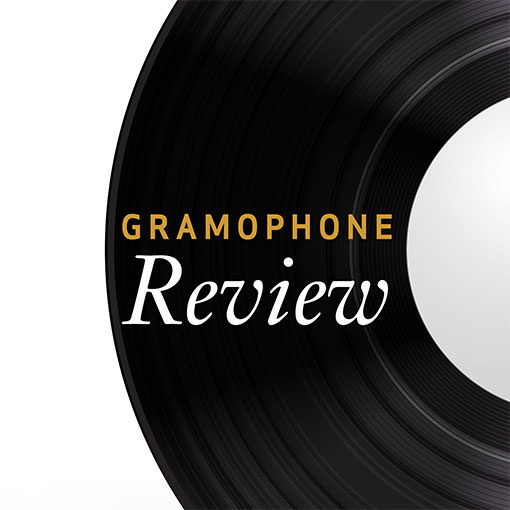Satie Orchestral Works
View record and artist detailsRecord and Artist Details
Composer or Director: Erik Satie
Label: EMI
Magazine Review Date: 8/1989
Media Format: CD or Download
Media Runtime: 66
Mastering:
DDD
Catalogue Number: 749471-2

Tracks:
| Composition | Artist Credit |
|---|---|
| En habit de cheval |
Erik Satie, Composer
Erik Satie, Composer Michel Plasson, Conductor Toulouse Capitole Orchestra |
| (3) Gymnopédies, Movement: Lent et douloureux |
Erik Satie, Composer
Erik Satie, Composer Michel Plasson, Conductor Toulouse Capitole Orchestra |
| (3) Gymnopédies, Movement: Lent et grave |
Erik Satie, Composer
Erik Satie, Composer Michel Plasson, Conductor Toulouse Capitole Orchestra |
| Parade |
Erik Satie, Composer
Erik Satie, Composer Michel Plasson, Conductor Toulouse Capitole Orchestra |
| Relâche |
Erik Satie, Composer
Erik Satie, Composer Michel Plasson, Conductor Toulouse Capitole Orchestra |
| (6) Gnossiennes, Movement: No. 3 (1890) |
Erik Satie, Composer
Erik Satie, Composer Michel Plasson, Conductor Toulouse Capitole Orchestra |
| (La) Belle excentrique |
Erik Satie, Composer
Erik Satie, Composer Michel Plasson, Conductor Toulouse Capitole Orchestra |
| (5) Grimaces for 'A Midsummer Night's Dream' |
Erik Satie, Composer
Erik Satie, Composer Michel Plasson, Conductor Toulouse Capitole Orchestra |
| (Le) Piccadilly |
Erik Satie, Composer
Erik Satie, Composer Michel Plasson, Conductor Toulouse Capitole Orchestra |
Author: Michael Oliver
The only piece of continuous music in this collection that plays for more than about three minutes is the Third Gymnopedie, and that does so only because of the somnambulant tempo that Plasson adopts for it. Parade and Relache of course, last for about 15 and about 20 minutes respectively, but each of those scores is very sectional. This fitfulness makes Satie difficult to programme, no doubt (perhaps he is heard at his best when his music alternates with pieces by other composers) but I don't think it's the only reason that I find this collection unsatisfying.
The Toulouse Capitole Orchestra sound at reduced strength, rather like a theatre orchestra. This may well be appropriate or even authentic for the ballet scores, it certainly is for La belle excentrique (a music-hall piece) and Le Piccadilly, possibly for the Cinq grimaces also, but it does increase the impression of a lot of short snippets all sounding rather similar. With the exception of the Gymnopedies, the Gnossienne and the brief canonic solemnities of En habit de cheval, the emphasis here is on Satie the humorist (the additional instruments in Parade are given maximum audibility—the typewriter has a bell, for heaven's sake and what on earth is that sound like someone falling into a bath?). Satie the austere archaist and Satie the mysterious proto-minimalist are represented here mainly by orchestrations (and performances) that sweeten and minimize those qualities. Parade and Relache are seen as suites of amusing trifles, their disconcerting anxiety and ambiguity obscured by their bright, shadowless surfaces. En habit de cheval (oddly described in the accompanying notes as ''very British in its detached impertinence, and of fanatical strictness''—neither mot is especially juste) goes rather better, and so do the Cinq grimaces, but these latter are almost anti-Satie, in that they seem to distil the essence of Parade into less than a fifth of the ballet's duration. The pit-band sound is exaggerated by a close recording perspective in which page-turns, asthmatic wheezes and a curious whooshing sound like a revolving door are all noticeable.'
The Toulouse Capitole Orchestra sound at reduced strength, rather like a theatre orchestra. This may well be appropriate or even authentic for the ballet scores, it certainly is for La belle excentrique (a music-hall piece) and Le Piccadilly, possibly for the Cinq grimaces also, but it does increase the impression of a lot of short snippets all sounding rather similar. With the exception of the Gymnopedies, the Gnossienne and the brief canonic solemnities of En habit de cheval, the emphasis here is on Satie the humorist (the additional instruments in Parade are given maximum audibility—the typewriter has a bell, for heaven's sake and what on earth is that sound like someone falling into a bath?). Satie the austere archaist and Satie the mysterious proto-minimalist are represented here mainly by orchestrations (and performances) that sweeten and minimize those qualities. Parade and Relache are seen as suites of amusing trifles, their disconcerting anxiety and ambiguity obscured by their bright, shadowless surfaces. En habit de cheval (oddly described in the accompanying notes as ''very British in its detached impertinence, and of fanatical strictness''—neither mot is especially juste) goes rather better, and so do the Cinq grimaces, but these latter are almost anti-Satie, in that they seem to distil the essence of Parade into less than a fifth of the ballet's duration. The pit-band sound is exaggerated by a close recording perspective in which page-turns, asthmatic wheezes and a curious whooshing sound like a revolving door are all noticeable.'
Discover the world's largest classical music catalogue with Presto Music.

Gramophone Digital Club
- Digital Edition
- Digital Archive
- Reviews Database
- Full website access
From £8.75 / month
Subscribe
Gramophone Full Club
- Print Edition
- Digital Edition
- Digital Archive
- Reviews Database
- Full website access
From £11.00 / month
Subscribe
If you are a library, university or other organisation that would be interested in an institutional subscription to Gramophone please click here for further information.





